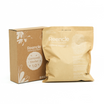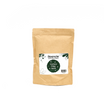How Do Seasonal Changes Affect the Amount of Fertilizer Needed for Different Crops?


Why does our partnership matters
For every purchase, we plant 1 TREE to nurture our planet 🌲Together, we are sowing the seeds of change and cultivating a greener, more sustainable world.
Anything else?
Anything else?You willl also receive an official certificate from Greenspark as a token of appreciation for your commitment to the environment! 📜
How do we see the progress?
How do we see the progress?Join us on this remarkable journey towards an impact dashboard.You can see how your eco-smart choice made the world a better place
 View more
View more
Your support empowers reforestation, fights climate change,
and paves the way for a brighter, eco-friendly future.
Join us on this remarkable journey towards a cleaner,healthier planet.
Shop with a purpose, shop with Reencle! 🛒💚
How Should Fertilizer Be Applied During Spring and Fall?
Fertilizer needs vary based on seasonal temperature differences and soil conditions.
Should you apply extra fertilizer during these periods?
It depends on the growth of your crops. If the leaves are dark green and the stems strong, additional fertilizer may not be necessary. During the warm and favorable growing seasons of spring and fall, it's recommended to apply fertilizer generously.
What’s the Recommended Fertilizer Ratio Across Seasons?
The annual fertilizer application should be divided as follows:
- 50% in spring
- 20% in summer
- 30% in fall
especially when considering nitrogen. This is because nitrogen doesn’t remain in the soil for long periods. Less fertilizer is applied in summer compared to spring and fall because nitrogen absorption in the soil changes—20-30% in spring, 70% in summer, and 20% in fall.
Why is Early Spring to Early Summer Important for Fertilization?
Crops experience their most vigorous growth in early spring through early summer, requiring a generous amount of fertilizer.
Why?
Because they need energy for developing new leaves, stems, and flowers. Mild temperatures and frequent rainfall encourage rapid growth, making nutrient absorption faster. For fast-growing perennial herbs like mint, fertilization should be managed by applying liquid or solid fertilizer regularly.
How Should Fertilizer Be Managed from Early Summer to Midsummer?
With stronger sunlight and longer days, crops might become stressed due to insufficient moisture.
Should you apply more fertilizer? Not necessarily. If leaves are wilting, the plants likely need water, not fertilizer. However, heat-tolerant plants such as basil, lemon verbena, and lemongrass benefit from diluted liquid fertilizer during this period.
What’s the Fertilizer Strategy for Early Fall to Fall?
In early fall to fall, temperatures and sunlight are ideal for plant growth.
But what about the effects of rain?
Heavy autumn rains or typhoons can wash away fertilizer, so it's crucial to apply more fertilizer at the right time, especially after rainfall. Generous fertilization during this period supports continued growth.
Should Fertilizer Be Applied in Winter to Early Spring?
During winter to early spring, both air and soil temperatures are low, and crops grow slowly.
Does this mean more fertilizer is needed?
No, applying too much fertilizer can actually harm the plants, leading to poor growth. Plants preparing for overwintering should be fertilized cautiously, as excessive fertilizer may cause frost damage. A small amount of fertilizer is sufficient during this period.











